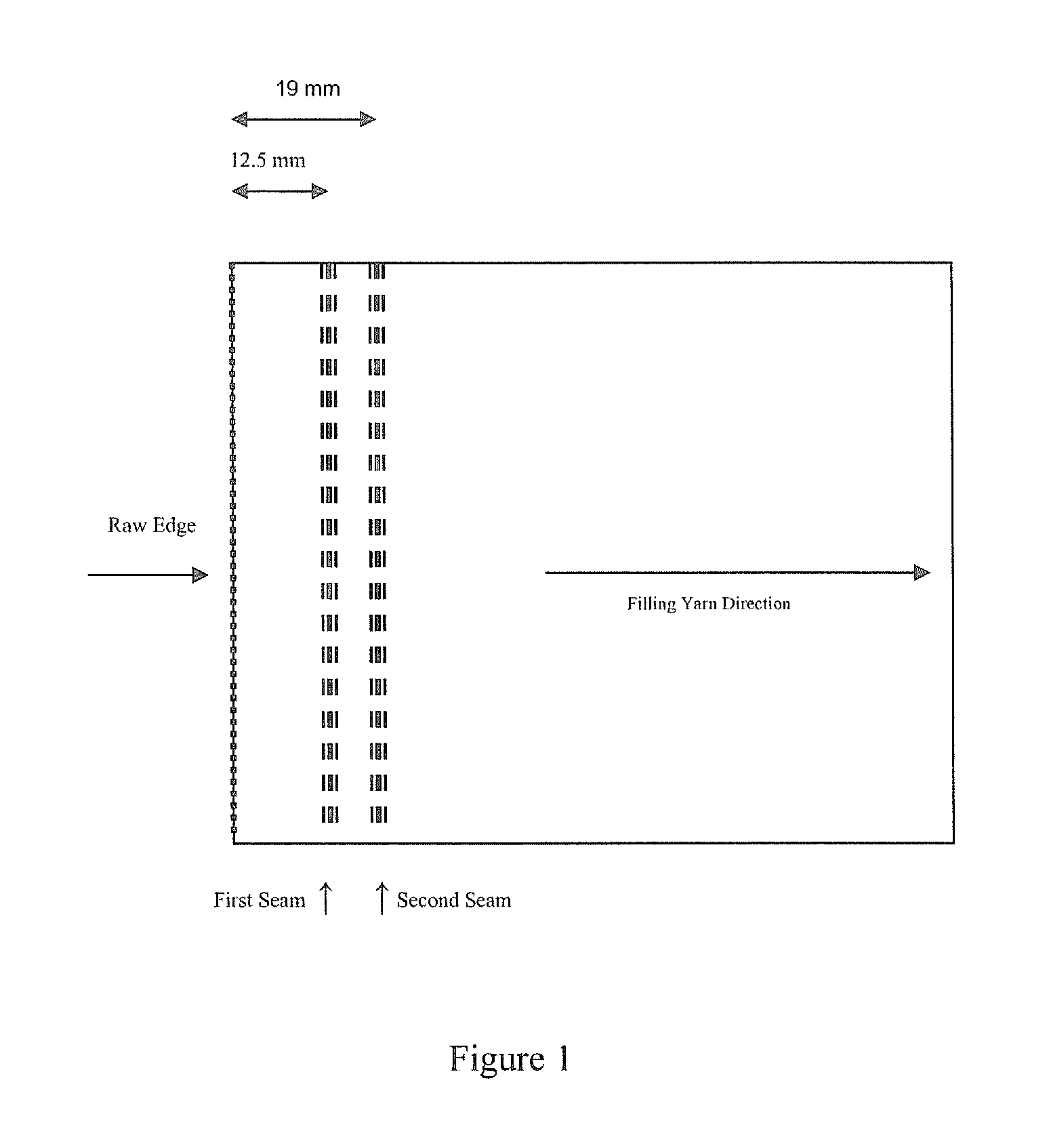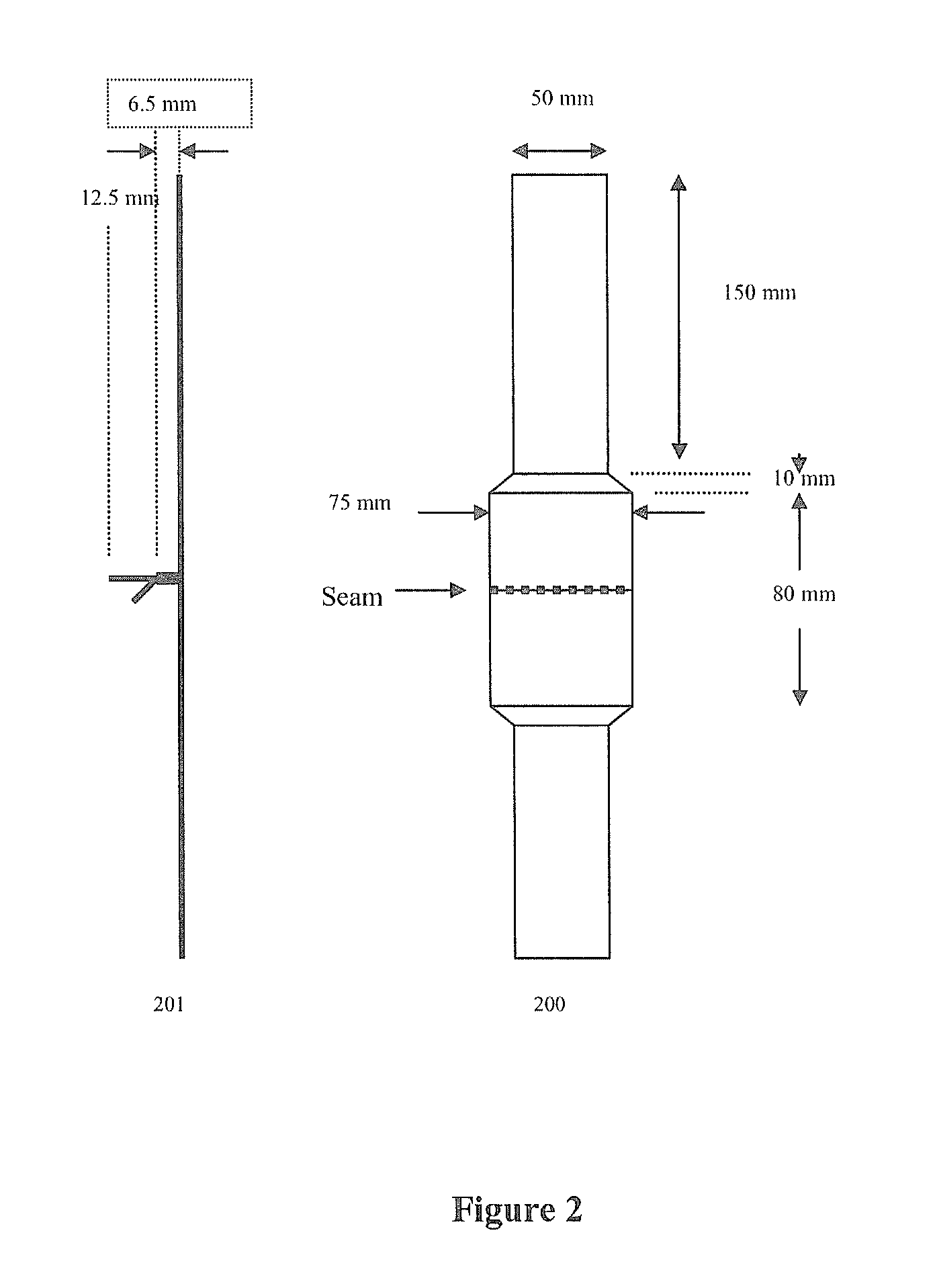Woven polyester fabric for airbags
a polyester fabric and airbag technology, applied in weaving, pedestrian/occupant safety arrangements, vehicular safety arrangements, etc., can solve the problems of polyester airbags that cannot be deployed in hot modules, polyester airbag fabrics woven from such polyester filament yarns can still fail in simulated deployment conditions, and uncontrolled leakage of inflator gas, so as to reduce the extent of seam combing
- Summary
- Abstract
- Description
- Claims
- Application Information
AI Technical Summary
Benefits of technology
Problems solved by technology
Method used
Image
Examples
example 2
illustrates that the ITC of polyester filament yarns is very dependent on the process conditions. The process conditions for Run No. 1 and Run No. 3 produced polyester filament yarns having an ITC @ 100° C. of about 0.5% or less. The yarn of Run No. 1, having an ITC of 0.31%, is comparable to the Type 725 nylon 66 filament yarn that produced a woven fabric with a low HSCI (Table 2). A surprising aspect of the yarns of the present invention, having an ITC of less than about 0.5%, is that they are not the products with the highest energy absorption capability (tensile index).
example 3
[0039] A 490 decitex polyester yarn was prepared according to the process of Example 2. The process conditions and yarn physical properties are set forth in Table 4.
TABLE 4Process ConditionsDraw ratio5.372nd draw roll temperature, ° C.230Relax ratio, %0.5Yarn Physical PropertiesTenacity, cN / tex77.2Elongation, %14.1Tensile Index285HAS @ 177° C., %9.4ITC @ 100° C.0.5
[0040] These filaments yarns were woven without twist in a plain weave with a yarn density in both the warp and filling direction of 20 yarns / cm. The greige fabric was scoured at 80° C. for 40 minutes in a jig and heat set at 185° C. for 2 minutes. Properties for the polyester fabric and a commercial Nylon 66 (INVISTA Type 725, 467 dtex) fabric are set forth in Table 5.
TABLE 5PropertiesPolyester, Example 3NylonFabric weight, g · m2215214Thread count, yarns / cm.20 × 2021 × 21Grab tensile strength, kg227234Grab tensile elongation, %2442Strip (2.54 cm) tensile strength, kg172158Strip (2.54 cm) tensile elongation, %2535Stat...
PUM
| Property | Measurement | Unit |
|---|---|---|
| elongation | aaaaa | aaaaa |
| aspect ratio | aaaaa | aaaaa |
| aspect ratio | aaaaa | aaaaa |
Abstract
Description
Claims
Application Information
 Login to View More
Login to View More - R&D
- Intellectual Property
- Life Sciences
- Materials
- Tech Scout
- Unparalleled Data Quality
- Higher Quality Content
- 60% Fewer Hallucinations
Browse by: Latest US Patents, China's latest patents, Technical Efficacy Thesaurus, Application Domain, Technology Topic, Popular Technical Reports.
© 2025 PatSnap. All rights reserved.Legal|Privacy policy|Modern Slavery Act Transparency Statement|Sitemap|About US| Contact US: help@patsnap.com


